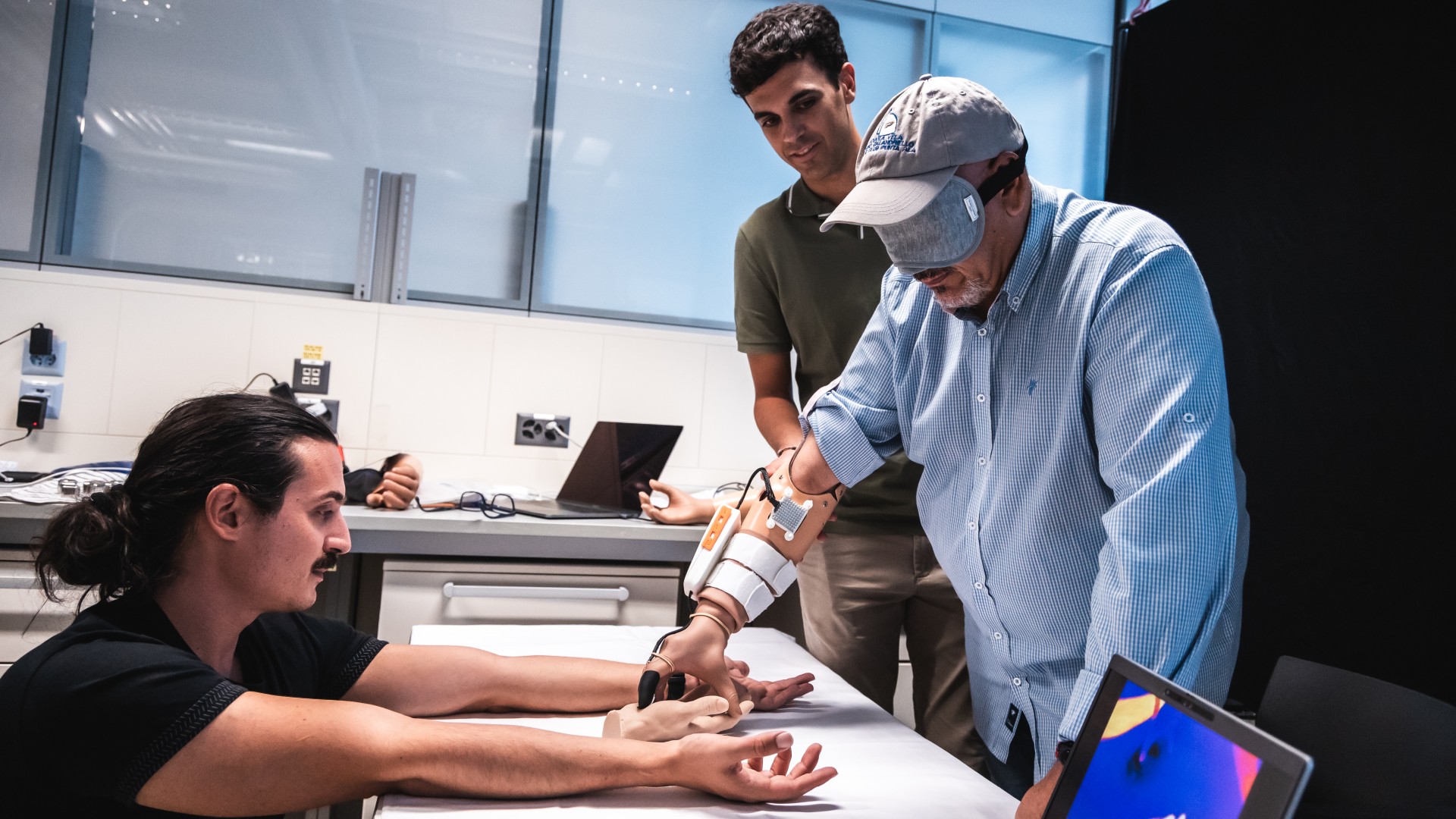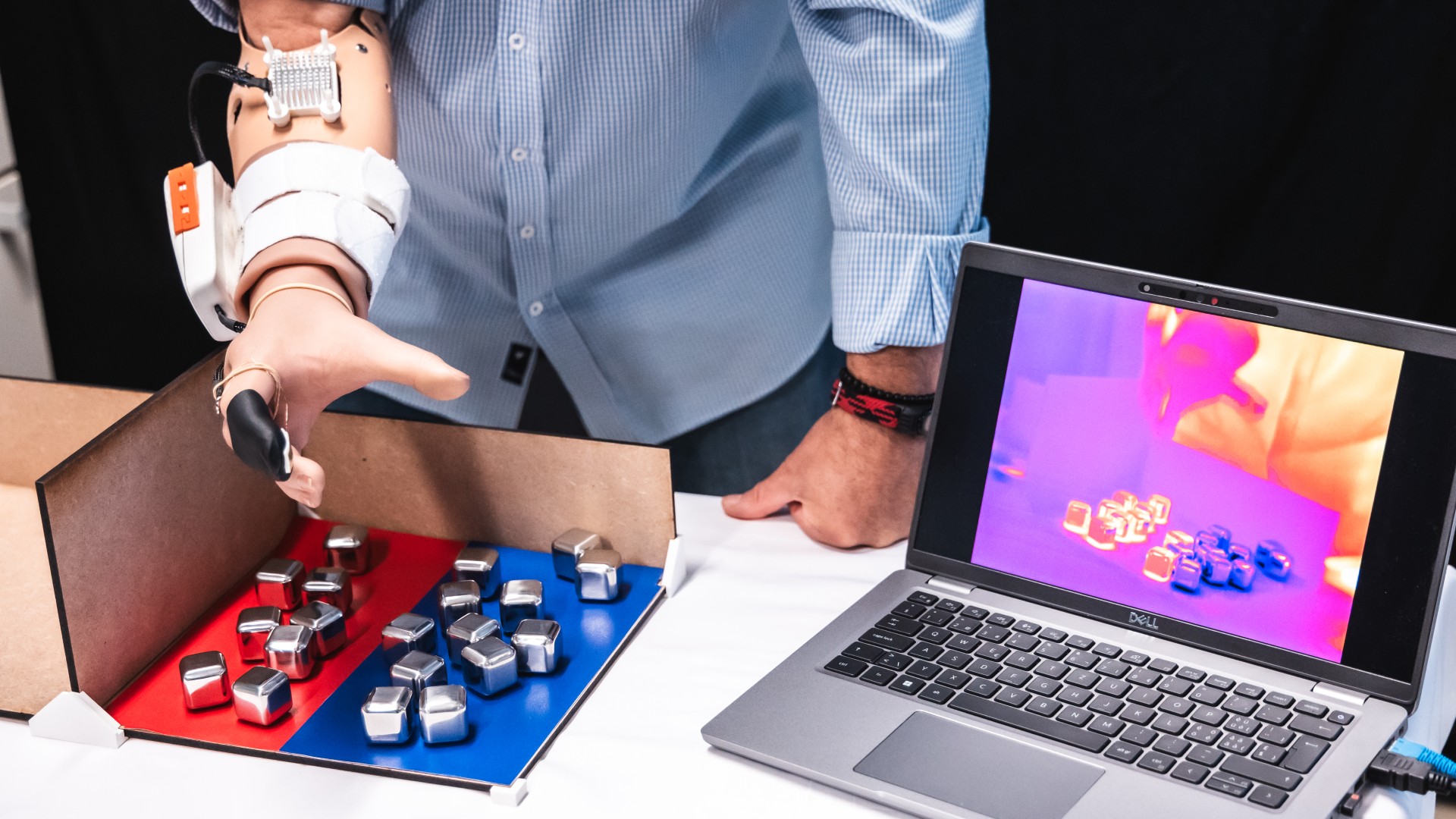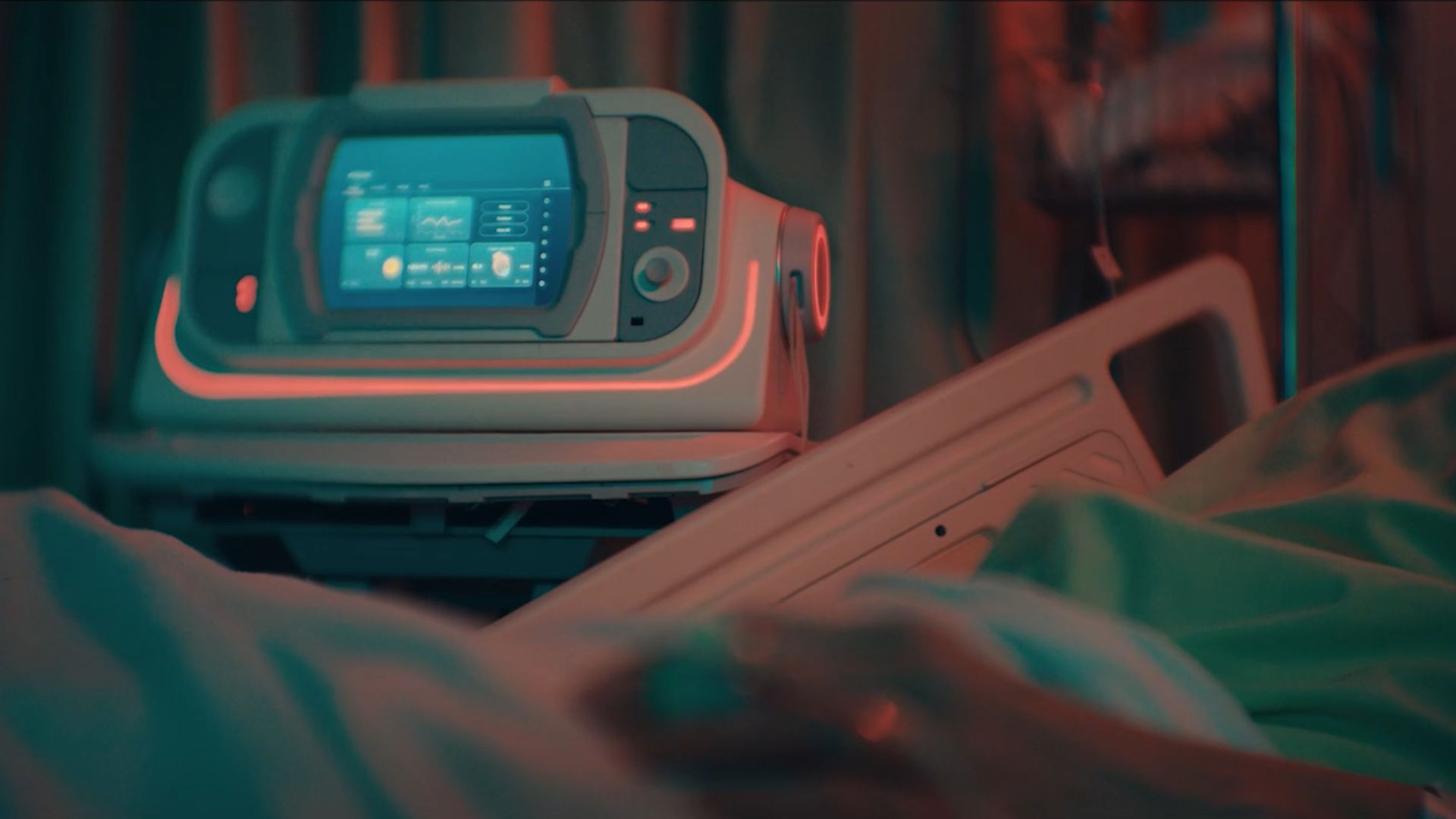'You can get the feeling that you are touching another human': New prosthetic device detects temperature
A prosthetic limb modified with a new device allowed an amputee to detect temperature changes in objects and also sense when they were touching another human being.

For the first time, scientists enabled an amputee to feel temperature via his prosthetic hand, crossing what the researchers say is one of the final hurdles in being able to imbue prosthetics with the full spectrum of senses available in a human limb.
The team achieved this feat by implanting a small device in the patient's prosthetic hand. This included a temperature sensor that was placed at the tip of the index finger and was linked to an apparatus, or thermode, connected to what remained of the patient's arm. This created a feedback loop in which temperature changes detected by the sensor were relayed to the patient's central nervous system; the brain then interpreted the temperature changes as being "felt" in the missing hand.
Fabrizio, a 57-year-old man from Italy whose last name has not been disclosed for privacy reasons, had his right arm amputated below his elbow when he was 20 years old and was the first person to receive the new device. Over more than a year, he participated in lab experiments that ultimately demonstrated the temperature-sensing abilities of his modified prosthetic limb.
In one experiment, for instance, Fabrizio successfully distinguished between visually identical bottles of water that ranged from 104 degrees Fahrenheit (40 degrees Celsius) to 68 F (20 C). He correctly distinguished the temperatures every time he used the new device, compared with 33% of the time when it was switched off.
In another test, he sorted metal cubes of different temperatures much more quickly with the device than without it. Another time, while blindfolded, Fabrizio differentiated between a human arm and a prosthetic arm just by poking them — in 80% of tests with the device, compared with 60% without the device.
Related: Oldest medical amputation on record was performed on a Stone Age child in Borneo 31,000 years ago
The researchers behind the new device described their findings in a paper published Friday (Feb. 9) in the journal Med. They say the invention both serves a helpful function and could make amputees' lives more enjoyable.
Get the world’s most fascinating discoveries delivered straight to your inbox.
"We tend to underestimate the importance of the hand as a way of interacting effectively with other people," Silvestro Micera, co-senior study author and a professor of translational neuroengineering at the Swiss Federal Institute of Technology Lausanne, told Live Science.
"What was really cool to see was that Fabrizio once, by chance, was touched by the arm of one of the students [in the lab] and he said, 'Wow, this is human,'" Micera said. "So the cool thing is that you can get the feeling that you are touching another human being."
Over the years, advances in technology have improved the touch-sensing ability of prosthetic limbs. However, temperature perception has been challenging to replicate artificially.
In 2023, Micera and colleagues discovered that people who had parts of their arms removed could still detect different temperatures applied to the skin on their residual limbs. It's also well known that amputees often continue to sense their lost limb as if it were still there — a phenomenon called a "phantom limb."
The team developed a way to tap into that remaining sensation and then embedded this technology into a commercial prosthetic limb. That's why they tested the device with Fabrizio, who already had a prosthetic and had also participated in the original 2023 study.
The "beauty" of the device, Micera said, is that you don't need to change an amputee's prosthetic limb. Theoretically, it could be integrated into any commercial prosthesis without requiring surgery to install it. The device is also battery-powered so it doesn't need to be plugged in, making it more readily wearable.
"Devices that create more natural ways for patients to interact with the environment are needed," Jeroen Bergmann, an associate professor of engineering science at the University of Oxford in the U.K., who was not involved in the research, told Live Science in an email. "This work shows a promising approach to address this need, but more work is needed to truly make this suitable for real world application," he said.
Warren Grill, a professor of biomedical engineering at Duke University in North Carolina who was also not involved in the research, echoed Bergmann's comments. He said to Live Science in an email that the findings were an "exciting advance in the development of a sensorized prosthesis" but that more research is needed in an everyday setting.
Such assessment will provide more insight into the benefits that the device may offer patients, Leen Jabban, a lecturer in electronic and electrical engineering at the University of Bath in the U.K, who was also not involved in the research, told Live Science in a separate email.
The team is now refining the device — for instance, they want to see how its performance might be affected by factors such as air temperature and humidity. Soon, they hope to develop a prosthesis that restores all of the sensation that can be felt in the human hand and that can be used at home. They aim to initially test the device in two volunteers.
"Hopefully, in say, three years from now, there will be two people getting these prostheses at home for good, with the possibility of getting all the sensation we normally have day by day from our natural hand," Micera said.
Ever wonder why some people build muscle more easily than others or why freckles come out in the sun? Send us your questions about how the human body works to community@livescience.com with the subject line "Health Desk Q," and you may see your question answered on the website!

Emily is a health news writer based in London, United Kingdom. She holds a bachelor's degree in biology from Durham University and a master's degree in clinical and therapeutic neuroscience from Oxford University. She has worked in science communication, medical writing and as a local news reporter while undertaking NCTJ journalism training with News Associates. In 2018, she was named one of MHP Communications' 30 journalists to watch under 30.



